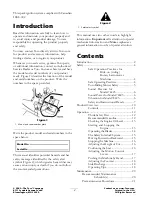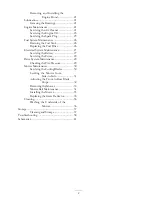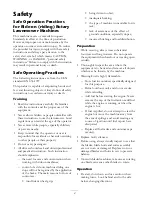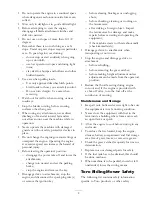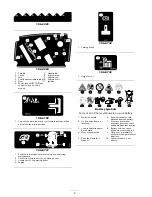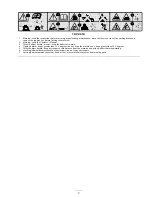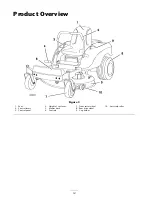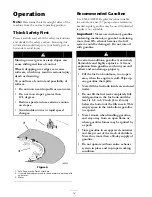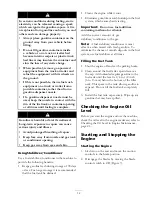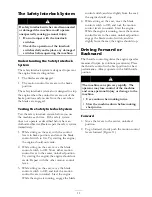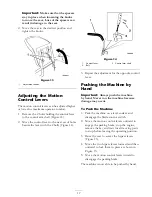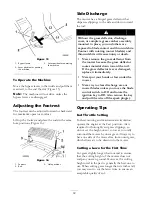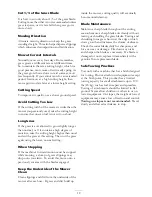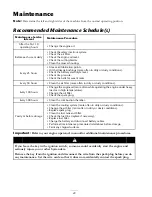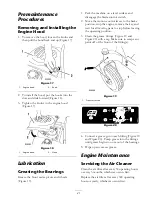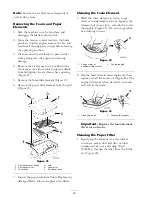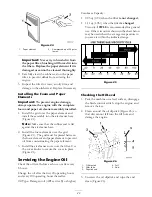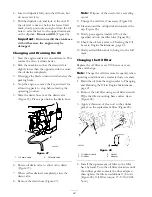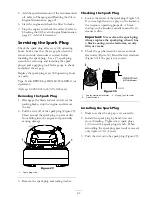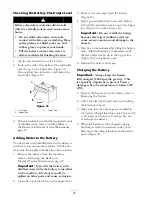
In certain conditions during fueling, static
electricity can be released causing a spark
which can ignite the gasoline vapors. A fire
or explosion from gasoline can burn you and
others and can damage property.
•
Always place gasoline containers on the
ground away from your vehicle before
filling.
•
Do not fill gasoline containers inside
a vehicle or on a truck or trailer bed
because interior carpets or plastic truck
bed liners may insulate the container and
slow the loss of any static charge.
•
When practical, remove gas-powered
equipment from the truck or trailer and
refuel the equipment with its wheels on
the ground.
•
If this is not possible, then refuel such
equipment on a truck or trailer from a
portable container, rather than from a
gasoline dispenser nozzle.
•
If a gasoline dispenser nozzle must be
used, keep the nozzle in contact with the
rim of the fuel tank or container opening
at all times until fueling is complete.
Gasoline is harmful or fatal if swallowed.
Long-term exposure to vapors can cause
serious injury and illness.
•
Avoid prolonged breathing of vapors.
•
Keep face away from nozzle and gas tank
or conditioner opening.
•
Keep gas away from eyes and skin.
Using Stabilizer/Conditioner
Use a fuel stabilizer/conditioner in the machine to
provide the following benefits:
•
Keeps gasoline fresh during storage of 90 days
or less. For longer storage it is recommended
that the fuel tank be drained.
•
Cleans the engine while it runs
•
Eliminates gum-like varnish buildup in the fuel
system, which causes hard starting
Important:
Do not use fuel additives
containing methanol or ethanol.
Add the correct amount of gas
stabilizer/conditioner to the gas.
Note:
A fuel stabilizer/conditioner is most
effective when mixed with fresh gasoline. To
minimize the chance of varnish deposits in the fuel
system, use fuel stabilizer at all times.
Filling the Fuel Tank
1. Shut the engine off and set the parking brake.
2. Clean around the fuel tank cap and remove
the cap. Add unleaded regular gasoline to the
fuel tank until the level is 1/4 to 1/2 inch
(6 to 13 mm) below the bottom of the filler
neck. This space in the tank allows gasoline to
expand. Do not fill the fuel tank completely
full.
3. Install the fuel tank cap securely. Wipe up any
gasoline that may have spilled.
Checking the Engine Oil
Level
Before you start the engine and use the machine,
check the oil level in the engine crankcase; refer to
Checking the Oil Level in Engine Maintenance,
page 21.
Starting and Stopping the
Engine
Starting the Engine
1. Sit down on the seat and move the motion
controls to the brake position.
2. Disengage the blades by moving the blade
control switch to Off (Figure 7).
13
Содержание TimeCutter Z530
Страница 41: ...Schematics Electrical Diagram Rev B 41 ...
Страница 42: ......
Страница 43: ......
Страница 44: ......


